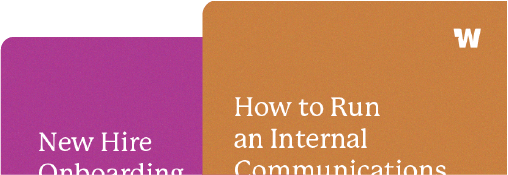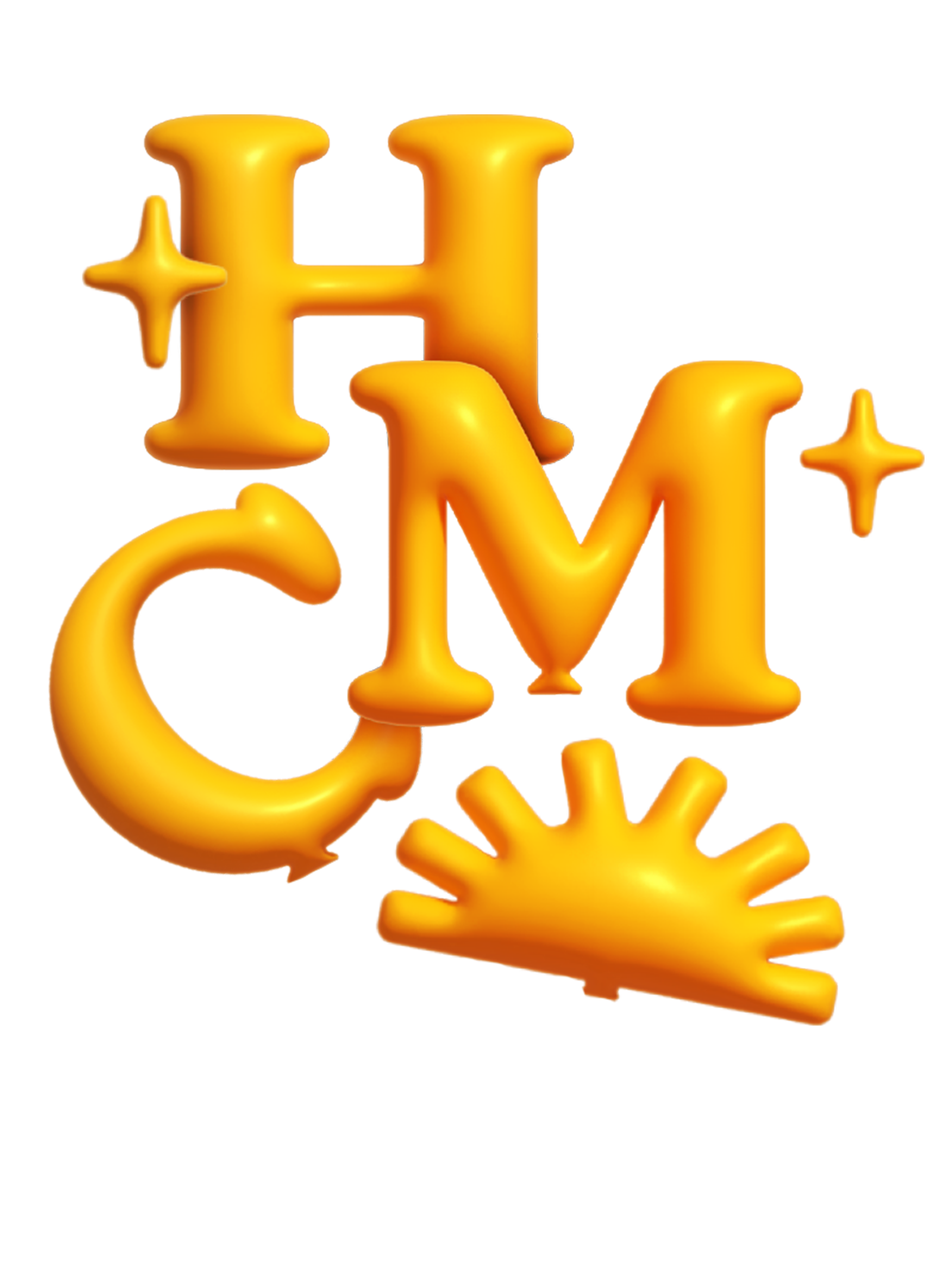The creative art of the all-company meeting
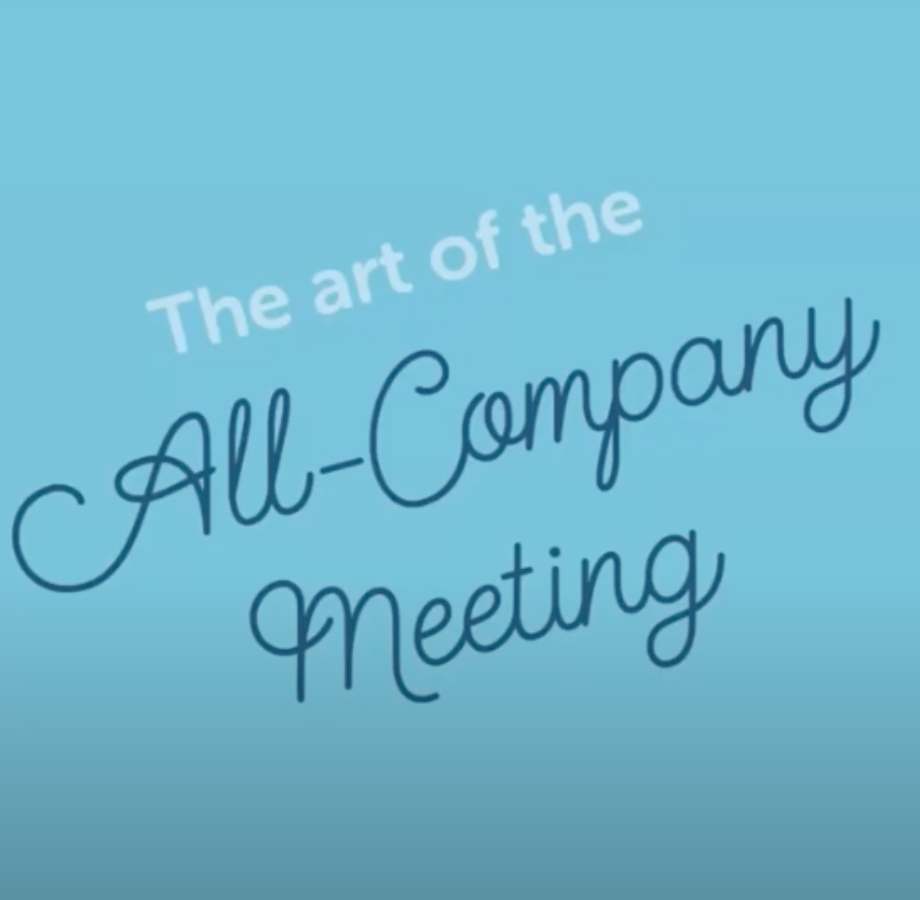
This blog post is a rough transcript of a workshop that we recently hosted with the dynamic and talented Phil Jarrett, Senior Manager of Internal Communications and Employee Brand at WP Engine. You can watch the entire workshop on YouTube here, or just hit the ‘play’ button below.
Hi, I’m Phil Jarrett. I’m currently the Senior Manager of Internal Communications and Employee Brand at WP Engine, the WordPress hosting platform currently powering about 8% of the websites most humans visit on a daily basis. And that’s weird because I’m just an artsy dude with crippling ADHD, but the thing that I can really wrap my brain around is how to take a bunch of different messages, package them for mass consumption, capture people’s attention, and maybe spark a little joy in the process…which leads us to today’s talk, The Art of the All-Company Meeting.
Everything I know about this topic came from observing people who did this work well, and from a lot of trial and error on my end.
So, if you go to your boss after this and say, “Hey, I need to expense a cockroach costume because a dude in a webinar told me so”…no, he didn’t. A.) you have to have a very cool and patient boss who understands the secret sauce of employee communication, and B.) in order you can get to that point, you need to make stuff good enough and compelling enough that finance won’t blink when you do something as weird as buying a cockroach costume. Because while all of this stuff is fun, you have a business to run and it can only work when everybody knows what they need to know. And if that cockroach costume isn’t telling people what they need to know, they don’t need it.
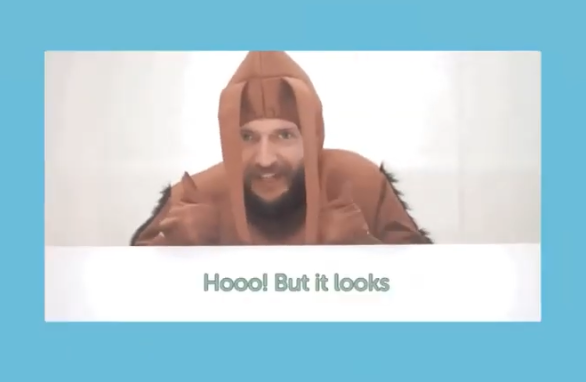
If your company meeting, isn’t telling people what they need to know, they don’t need it. Because let’s be real…every meeting, all-company or not, is just a spectrum. I was recently chatting with a former coworker about her new gig, and because internal comms is my world, I asked her about their company town halls look like…and they told me that they don’t have them. They just have a monthly email that everyone is expected to read.
Unsurprisingly, nobody at this company knew what the heck was going on, because where on earth are they going to get that information? We communicate internally because the lack of information creates organizational chaos, and you can only keep people around for so long in an environment like that.
Now on the other end of the spectrum, you can communicate or even over-communicate, but do it in a way that completely wastes everybody’s time.
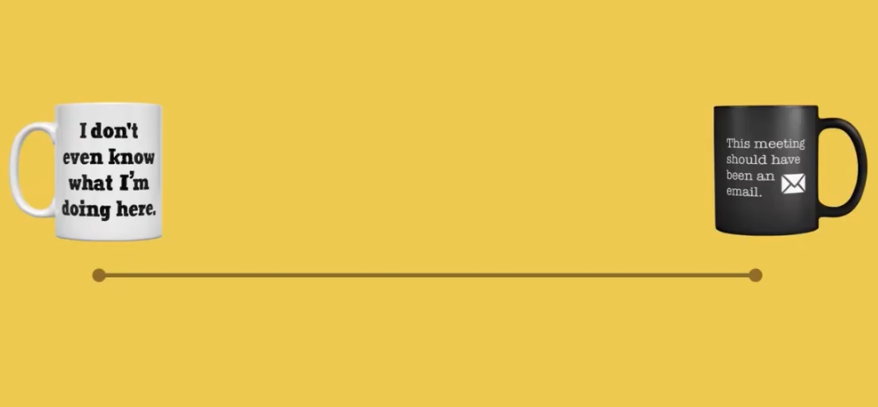
And I think we’ve all been the victim to plenty of meetings that happen solely because they’ve been set up to repeat on a calendar, and you can absolutely tell the speaker is just reaching for content, and it’s soul-sucking.
You burn through the goodwill of your employees. And if it’s an all-company meeting, you’ve taken the entire company offline. So you’ve staged a super, super, super expensive meeting to communicate either nothing at all or something that’s much better served for a more efficient format, like an email or a Slack post.
So my good friends at Workshop asked me to touch on the concept of cadence: how often is enough for something like a town hall, all-company meeting? |
And I was tempted to say the answer varies based on the size of your organization, and the complexity of your topics, and what you want to accomplish, but we’re one day away from the weekend and I’ve got a hot take on best practices. The answer is once per week.
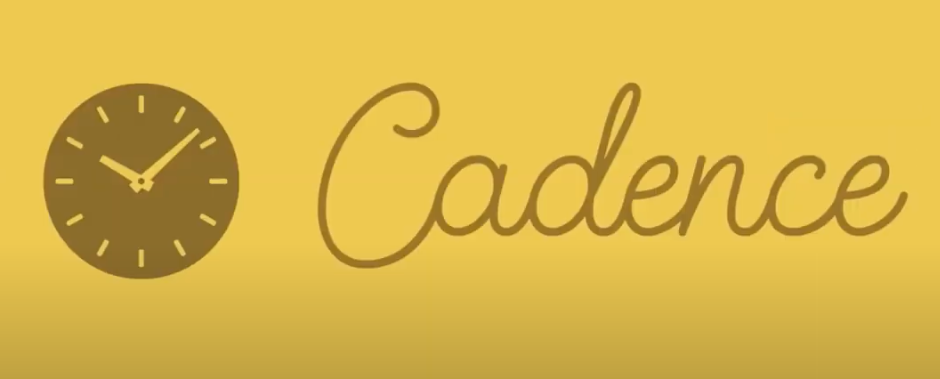
You should be having all-hands meetings once per week. And yes, part of that is to make sure people need to know what they need to know on the business side in order to prevent that organizational chaos that I talked about before. Because if your employees are finding out about new features and promotions from customers, you done goofed. They’re going to feel blindsided and not set up for success because they’re expected to do their job with incomplete information. It’s not great.
But the companies who fall off the bandwagon of making good all-company content on a weekly basis do so for a number of reasons.
One of the reasons people fall off is it’s a lot of work. If you’re the CEO, you can feel like all of that information lives inside your head, and sometimes it’s just like an even wash on time, where you get that info out of your head and into the hands of another presenter, or you just take the stage and you need to do it yourself, right?
And before long you’ve set the precedent: every week is essentially a monologue from you. It’s taxing for you and potentially boring for everybody else. And then there’s just the technical stuff, right? You got Zoom glitches, multiple versions of the same presentation deck, last minute submissions or omissions from key presenters, the technology and the people burden of the all-company meeting is real and you’ve got to invest time and talent into making sure everything goes smoothly.
And then sometimes we’re just like sitting on bad or uncomfortable news or numbers. You don’t have to go to therapy to learn that conflict avoidance isn’t really a healthy way to build trust or fix things that are busted. All it does is harbor resentment, especially since our dark organizational secrets are rarely as secret as we think they are. But if you’ve set the precedent for having leaders or stakeholders deliver an approachable and honest fireside chat about the realities of what’s going on, you can turn that dumpster fire into a cozy all–company bonfire, where you sing camp songs about what approaches you’re trying to right the ship, and if and when you know those things are working.
Another likely culprit: no prep work or agenda beforehand. There’s faking-it-till-you-make-it and then there’s the organizational equivalent of bombing at an open mic week after week. Later on in this talk, we’ll chat about good design, but another under-reported pitfall is just assuming all you have to talk about is sales figures or product updates. There is a whole vein of content regarding what it’s like to work at your company, what opportunities are available to employees, or simply just devoting time to create a fun new memory with employees. And we’ll come back to those ideas later. But first, here’s some content that you might be forgetting when it comes to your weekly meetings:
- What happened last week, screenshots, photos, all of its fair game.
- Celebrate your wins and reinforce that people are both working and living their best lives at the same time.
- Events, virtual and in person, if everybody in the room is invited, make sure they know about it.
- New hire announcement, you went through all the trouble and expense of growing your team with a thoughtfully picked new candidate, celebrate it, make them feel welcome, help your team learn more about this individual.
- Job openings, internal and external, tell the story of your company’s growth by sharing updates about things that people can invite their friends to come join in or if they’re ready to unlock that next chapter of their career, making sure that they know about it, know that they have the option to get into it.
- Questions…Q&A, your employees have questions! But answer a random question from a submission form or have your employees up vote questions using a platform like Slido. I love Slido.
So here’s my first noble truth of internal communications. You are always conditioning your employees, and I know this sounds like a little shady and weird, but hear me out. Our brains are wired to look for patterns and it’s why when Pavlov rang a bell and gave his dog a snack enough times, the dog began to associate the bell with food. But the more times that bell rings and the food doesn’t arrive, the weaker that association becomes. And when you call everyone together and you don’t give your employees new or memorable information, or information that reinforces the things that they need to remember, you are conditioning your employees in all of the wrong ways.
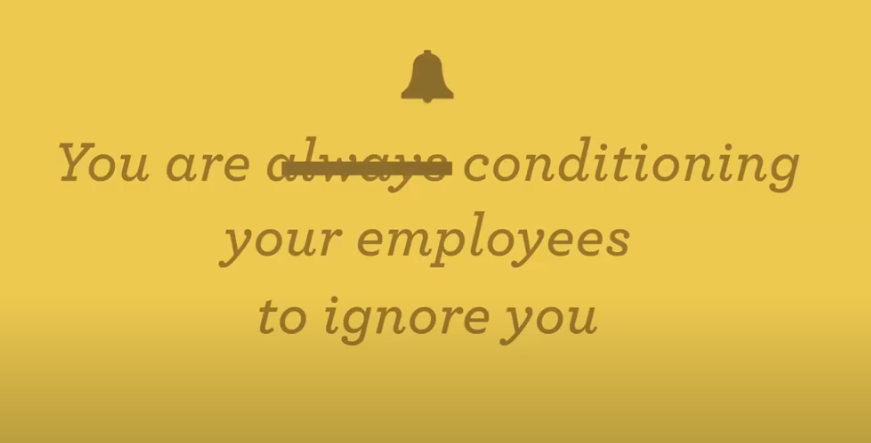
You are teaching them that when we have this all-company meeting, it’s fine if I’m paying attention elsewhere, it’s fine if I’m logged in on my machine, but actually taking a power nap because odds are there is nothing of value for me in this meeting.
And when you start canceling your all-company meetings at the last possible second, you’re doing several somethings, all super destructive: conditioning your employees to believe that this meeting is so unimportant that it can be dropped on whim and also giving concrete evidence that everybody was too preoccupied to communicate this week.
And that’s obviously not where we want to be, right? So when we’re meeting on the value spectrum, we want our employees to be a little bit more empowered, right? We want them to know what they need to know so they can do the things that they need to do.
We also want them to feel like their time is valued, that they are fully, and respected contributors, and as human beings. And we can boil that down into one simple statement, every single all-company meeting you have needs to have a satisfying answer to the following question. Why are you here? And here’s a first stab at an answer, right? This is a no brainer. You’re here because we want you to know information. I have information that I need you to hear.
But let’s think critically about what we are sharing and how we’re sharing it. The first question is, do you really need to know this? The all-company meeting is a powerful tool, but it’s not the only tool in your arsenal and if you haven’t segmented your employee email lists and Slack channels by region, by department, by interest, you are off to a very bad start. When you haven’t built out the infrastructure to get your messages delivered to just the people who need to know it, you run the risk of oversharing. And then we’re back to doing what I warned about before, training people to believe that what you’re saying doesn’t actually pertain to them.
And Lauren, thank you for bringing up your comment about how you do this at scale, we ran into this exact problem. WP Engine is a Texas company. They scaled globally at such a fast rate for so many multiple years, their internal email marketing software changed, company messaging application changed, and when it no longer felt appropriate to use that weekly all-company town hall meeting to talk about what was going on in the Austin area, to talk about people’s anniversaries or birthdays, there suddenly wasn’t a clear way to get that information in front of the roughly two thirds of the company working from the Texas hub, especially during the pandemic. And our emails were getting overlooked, Slack messages would get buried by new content, and overall the messages weren’t sticking like they had before, so we had to get creative.
And I’m just going to apologize for this one in advance. (singing)
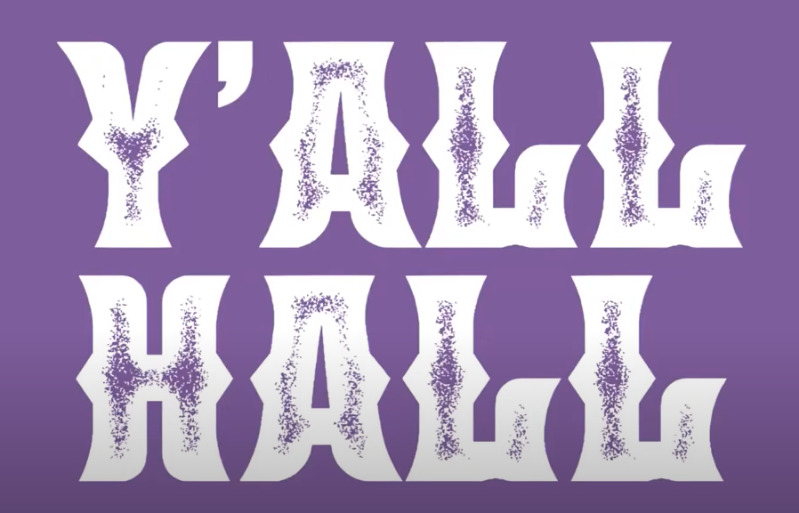
Okay, I’m not going to make you listen to the entire Y’all Hall song, but it is great, and that is all employee content. We had an employee videographer go and film some of that stuff. We had an employee down in Texas write our little jingle for us. Pretty amazing. And so once a month, we now host Y’all Hall for Texas, Omaha City Hall for Nebraska, also has its own jingle, No Hall for our virtual employees, because they don’t have any halls, and we have like a half dozen other regional meetings to make sure we’re bringing those communities together and making sure the right information is getting to the right people. We try and keep them short, snappy, and entertaining.
But let’s go ahead and assume we’ve done a good job of curating content down to just the stuff that everybody needs to know.
Are we packaging it in a way that sticks? One of my favorite company values of Flywheel, that then got ported over to WP Engine, was design matters. And while I’m a big believer in making things look polished and pretty, that’s not the whole picture here. Making design matter is about making things intentional and well crafted for your audience. We are often prisoners to the presentation tools which we use and the templates that come stock with those applications. You see stuff like this everywhere in the corporate world. And let me do a speed run on why there isn’t an ounce of intentionality behind a slide like this one.
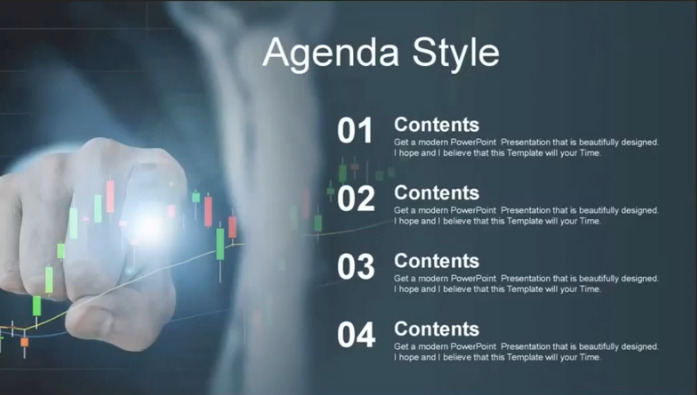
For starters, what’s going on with the businessman doing some Harry Potter spell on what might be the stock market? Where is your company’s distinct look, feel, flavor in a side like this? You’re just another unflavored oatmeal of a company using imagery of faceless strangers to communicate about things that are actually a reality for your employees. But they’re looking at a business wizard finger and reading through four sentences of text plus headings, and instead of hearing the words that you’re saying while you speak, they’re reading. And I want to hit that point hard because this drives me nuts in presentations, people aren’t listening when they’re reading, and if you’re reading your slides, by definition that presentation could have been an email. If you’re doing it, stop. Do not waste people’s time with slow list slides and text heavy slides. Make design matter.
It’s like giving someone you care about a handwritten letter or gift that perfectly suits their taste. And more importantly, if it’s been made with love, it’s going to register as new information and it’s likely to stick. So when Flywheel and WP Engine combined our organizations, we also combined our values and I made a lot of noise at the time about the importance of making them unique and well designed. Why? Because people are way more likely to remember them when they like seeing them, and aside from just reading the text, there’s a visual cue that says, “Hey, we’re talking about being customer inspired.” And you can take this same principle and apply it elsewhere. This is a graphic treatment that we did in 2020 at Flywheel for our company’s strategic pillars and company objectives. Are you going to be referencing this stuff throughout a calendar year? Have a look and feel for it, reference it frequently, and again, it helps people know exactly what you’re talking about and why it matters.
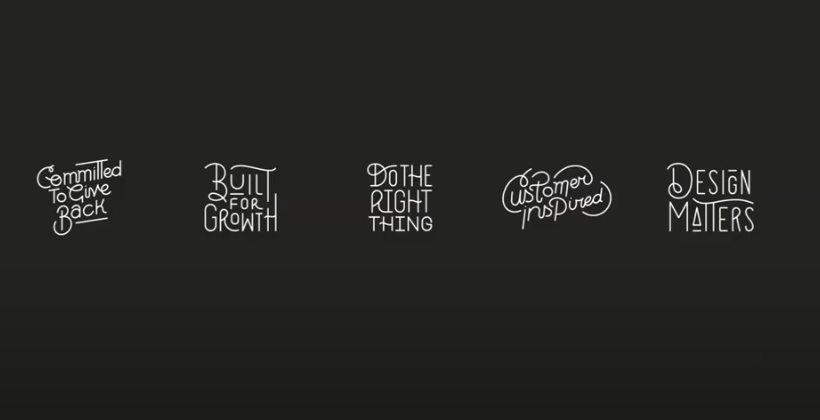
Repetition is a big part of the name of the game, but again, having those visual cues, it’s just one more bell, one more association that you can kind of give the people to say, “Hey, I’m delivering something thoughtful, and meaningful, and intentional, and it’s something that we’ve talked about before.” And so I think that you can also take this to the stuff that you talk about on a regular basis. I logged some hefty hours previously doing data visualization and there’s a good chance if you’re in an all-company meeting money’s going to come up. And while you might think you need a Harry Potter businessman pointing at the stock market kind of chart to communicate professionalism, I’ve always been a firm believer in less being more.
So this is what it looked like for Flywheel on a weekly basis for our sales revenue. I was a big believer in you want to put things in reference to a target, a goal, or pinch mark, and if possible, try and communicate only two data points, like where you want to be and what your progress is toward that thing. Make it clearly labeled, this is just for the month of February, and then how are we doing in the month of February, kind of pacing towards that. And if you’re going to have multiple data points, make sure you keep them separated, right? Don’t put customers and dollars on the same graph, keep them separated, kind of show kind of different methods of progress for the same thing. And then finally, put it in perspective. Not everyone’s a number cruncher.
I am the furthest from a bean counter, but I do believe that having good data matters. And so when you’re taking things like churn versus revenue and trying to kind of give a picture of like, okay, how much money are we actually making? Adding those things together in a way that you’re not expecting other people to do the math because they probably don’t have the willpower to do it. They probably just got enough will power to put on pajama pants before joining the meeting. They’re not going to do math for you. But there’s other ways I think of kind of getting people’s attention in some creative ways. This next one is one made by a former coworker named Brett who talked about our performance programs and I’ll play that for you here. Visuals aren’t everything. She wanted to share an update about our professional development program, she would make sure that this jingle was seared into the brains of every single person in the audience. (singing)
I mean, it’s generic visuals, I think she got it on Fiverr or something, but the music was all original and so when employees wanted to go to a conference, take a course, or get a certification, there was that ear worm, right? Telling you that all you needed to do was put some PEP in your step. You go to Slack, you go to our internal intranet and you look for PEP, you know where to go, because again, just absolute ear worm content.
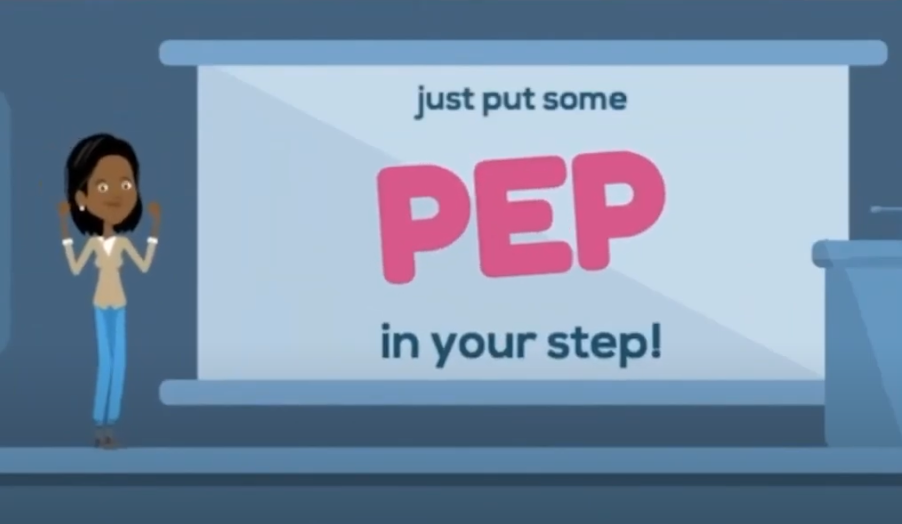
Another great way that you can kind of make design matter in your work is just in the follow up, right? I forget people’s names 15 seconds after they tell them to me and I certainly don’t remember anything that’s been said at each week’s meeting. And that’s why it’s great to reinforce your content with a follow up synopsis email and/or a Slack post, catch people on the channels they pay closest attention to. Make it pretty, make it readable, make it easy to find for future reference. It’s extra work, but it goes a long way. Again, part of making design matter is being intentional, being intentional about people retaining information means repeating yourself.
And this is where I’m going to pivot to kind of answer that question for our anonymous attendee, which is, what if I don’t have enough content for weekly communications? I kind of alluded to it before, but I think the case still stands, not everything that you have to say is entirely about the business and not every meeting needs to be an hour long or 30 minutes long. I think sometimes the things that we want to say to that question why are you here, it’s as simple as because we want you around, right? If you look at your non-work relationships, especially your friends and your romantic partners, these relationships are at will, kind of like employment, right? We keep contact and invest time on an ongoing basis because it’s healthy and it’s what keeps the people we love close to us, and the same is true work. Right?
You know who these people are, you’re each a character in each other’s lives by choice, and you’re actively building a shared history with them. And you wouldn’t come home to your partner and not say a word to them for weeks on end, right? If pressed about the state of household finances, it would be weird to go radio silent, right? It would be bad to forget a birthday, to forget an anniversary. And if you look at the data and anecdotes coming out of the great resignation of 2021, you see it time and time again, people saying to their employers, “I need you to see me as a whole human being. I need respect. I need to feel like my voice is heard and I need to know what the hell’s going on here.” And so again, this is the secret, the answer to this question, why are you here, doesn’t have to be something profound. It can be as simple as just a regular reminder that we chose you because we like the work that you do. We want you to be happy at work. We want you to be happy outside of work.
One of my favorite traditions that we had at Flywheel was with the new hire photo shoot. Every single new employee came in with props they felt represented them and we did these highly stylized photo sessions. And these would turn into office artwork or ad campaigns, maybe they’d just be your profile photo on Slack and LinkedIn, but they would also be baked into the presentation deck libraries. So odds are at least once per quarter you would see your own face on screen when we are presenting all-company information. And at a time when so many companies are claiming to be as inclusive as possible, I love how we went just a step beyond saying, “We hope you can see yourself here,” and then went fully literal with it like, “You are going to see yourself here, like your photograph all of the time, you are a core piece of the fabric of this company and we are so glad you are here.”

And again, making sure that your town halls, your all-hands, your weekly meetings are reflective of your employees and kind of seeing them as whole people. There’s a few things that you can do, right? Are you talking about their work? Are you shining a light on the accomplishments of individual departments? And again, to our anonymous attendee who’s struggling to come up with content, again, it’s not all on you, right? You’ve got other heads of other teams and things like that. They know the nuances of the departments. Let them have the mic, let them get up and talk about stuff that they’re proud of, let them give shout outs to their team. It’s going to mean the world to them that they’re given the opportunity to do it. And are you shining a light on the product teams and the teams that sell and support each of those products, and kind of telling that story? Again, people just want to be seen and heard as we go.
And then are you acknowledging their accomplishments and milestones? We had this really fun thing we did at Flywheel called Fly Fives. (singing)
Again, we have a jingle for everything, but the idea was that you could kind of give people praise in a Slack channel, just via form, it would ping them, and each week we would kind of read through the names of people who did something awesome, living up to our values and we would give a nonsense prize away. We ended up taking this exact same concept and bringing it to WP Engine, except this time we built a really robust Slack app called Hell Yeah. And Hell Yeah ended up becoming the thing that we would use to power an awards’ ceremony that was long standing at WP Engine, but we kind of took it up a level called Supercharged. And this is the Supercharged trophy, it’s a really sweet piece of extruded concrete with a brass top, and we blast your name and the value you lived up to with lasers into the side of it.
But again, once a quarter, we take one of our town halls and we just go through the list of the hundreds of people who got nominated, kind of pick a winner, have one of the nominees read a nice thing that they have to say about them. I know our CEO called me after the first one, he’s like, “You know, I don’t know, maybe it’s because of the pandemic, people just aren’t crying like they normally do during these.” And it feels weird to say that, but it’s true, you want to go for high emotional value, so we really made sure to really hammer home the kind of meaningful content in the nomination videos for future sessions, making sure that people really, really, really felt that their contributions and efforts were fully seen, fully touted, fully appreciated. This would be the highlight of their year that they get this and so we put a lot of love, and attention, and polish into the Supercharged awards to make sure that people feel special.
Another easy win, is having guest hosts. Keeping content fresh is hard when you have a weekly all-company meeting. And like I mentioned before, one of the things that we want to avoid doing is conditioning employees to stop paying attention. Every organization has a number of unsung heroes waiting for their time to shine and chances are they’ll be great if you give them a script and have them deliver news that might otherwise belong to a senior leader or a member of your people ops team. But your employees are paying close attention because it’s somebody new and you’re giving impression of a broader company buy-in when you have a not senior leader or decision maker up in front of the whole company and delivering news. At WP Engine, we regularly have employee guest hosts for our weekly town hall and one of my favorite things to do is to workshop with these guest hosts on hobbies or quirks that we can highlight and turn into content to keep people’s attention up.
This is one of my favorite examples.

This was just a person who really was passionate about chicken tenders and so we made a segment for in between each person that she introduced, she would give a countdown to her top 10 favorite dipping sauces for chicken tenders and chat went nuts for it. The hot takes on ketchup, versus ranch, versus cane sauce, versus Chick-fil-A sauce, it’s harmless controversy. I love a good food debate and just playful. And it’s that kind of stuff, plus a dollop of honey barbecue that really makes up the signature flavor that we know as company culture.
And on the topic of culture, as somebody who spent a year with the Head of Culture in my title, I can really tell you that it’s the little stuff that goes a long way. So much of what we love about our company dynamics are rooted in nostalgia for past experiences. The problem is our new employees don’t always get to experience them and things inevitably change. And if you want to dodge the pitfalls of back in my day things were better, that mentality, here’s my tip. You got to make new experiences. You can absolutely manufacture a new inside joke every month if you wanted to. And that sounds weird, but it’s true. Jamie’s seen it. She knows. And this is the thing, that cockroach costume thing, this is that. This is the thing that’s next to impossible to explain to your bosses about why it works, but it works, and when you do it, people see it, people love it, people want more of it.
And for the sake of this presentation, I wanted to try and put a name on this. So here we go. This is kind of like what I would consider my niche, right? This is my specialty innovation. I didn’t contribute a lot to the world of internal communications, but if I could be remembered for one thing, it’s this. It’s the MVP, which in my case stands for minimum viable professionalism and I’m being serious while not actually being serious. Your customer voice is not the same thing as your employee voice. So swap out that polo shirt for a graphic tee or maybe put a blazer on top of it if you absolutely have to, but get rid of your polished talking points and communicate with your employees in a tone of voice that more closely mimics day to day conversation, that mimics the kind of media that they’re likely to consume when they log off. You want to make work feel safe and comfortable, make it a closer match to how things are on the outside.
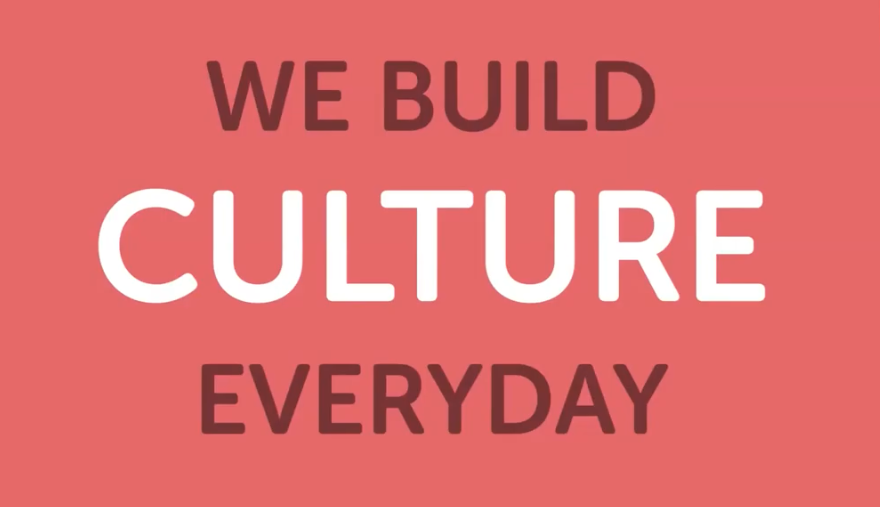
And this is going to be different for every company you work for, but depending on where you work it might mean it’s okay to drop some PG-13 language and at a minimum allow yourself to have some fun with your employees. It is stupid stuff like embedding Soprano’s gifs telling people what today’s lunch is going to be. It was a day we had chicken parm and so I just had to drop Tony Soprano in there. And when the pandemic hit and we had a bunch of people from Texas in, we’re just like, “Hey, all we eat is corn in Nebraska.” We invented a fake lunch and we kind of let that go from there. And this eventually turned into people doing honest door dash food reviews as little video segments, but it’s again letting people just be weirdly aggressively online.
So one of the prizes for the Fly Fives was you get to watch the Bee Movie, but every time they say Bee, it gets faster, over lunch today. It’s nonsense. But again, one of the coolest things about it is you’re creating a ritual, but that ritual always has a surprising twist. There’s a lot of just little things you can do, like hitting the Zoom chat with like, “Hey, is a hot dog a sandwich?”, just in the middle of a meeting just to keep people’s attention up. It is okay to just make content that is solely to be like, “Hey, eyes back up here.” Even if it is dumb. Again, we build a culture every day. It’s about putting a clever wrapper on something mundane for the purpose of sparking joy and also just making sure that people pay attention because when they logged into work today, the last thing they were expecting to see was this.
Okay. Again, this is minimum viable professionalism. So Julius, to your question, it’s great creating those in theory, but how do you compete with other priorities? The answer is you don’t drop those other priorities, right? You keep bringing them in. And I call them minimum viable on purpose, these are low effort. They’re fun. You give them the people who have the time and energy to do it and can weave that in. Again, if you don’t take the time to do it, if you don’t give people the opportunity to relax, have fun, build culture, you’re just not going to make time for it. It’s a little bit like, again, to bring back that relationship metaphor, yes, I love you, but I couldn’t be bothered enough to cook you dinner, to bring you flowers on our anniversary, to do these other things. We take the time to do them because taking the time to do them demonstrates that we care.
And so again, it is about making time and if this is a thing, if communications is a thing and building culture is a thing that is valuable to you, then you take the time to do it. And so to the question of whether or not we create all the videos inside each week or do we have other resources to do that? Yeah, we create them just kind of on an intermittent basis. A lot of times we just kind of stick to our standard slide deck. We let people kind of fall into a rhythm, there’s a regular cadence of things, there’s kind of some similarly designed things. It’s a mix of repetition, right? We create those branded assets for strategic pillars or company values and we’ll kind of use those as callbacks, but when we want to make something loud and splashy, we’ll hit people with it.
You can’t do it every week because then you’re just creating a cacophony. And this was a really cool thing that Jamie told me actually once back in the day, it was making sure that when we do something stupid, like a cockroach costume, that for each town hall we’re doing it for the thing that matters most in that meeting. So if you are only going to retain one piece of information, it should be the thing that we make the noisiest, and so that is how we do it. I will tell you my secret for making a lot of that stuff is A, just filming stuff, partnering with other people to help make that stuff, and then dropping $200.00 a year on a subscription to Envato Elements, which is just a catalog of bizarre graphics, templates, sound effects, whatever you need. Just having them on deck and ready to go. I have a stream deck on my desktop here, so I can kind of do some fun stuff on the fly, kind of having that stuff ready to go for when we need it.
Again, it’s a little bit about planning in advance, knowing what you’re going to need, doing callbacks, all that other stuff. But I want to give us some more time for more questions. I’m going to go ahead and wrap things up. Again, the name’s Phil Jarrett. I am the Senior Manager of Internal Communications and Brand at WP Engine. And there I am on LinkedIn. Thank you all for your time.
